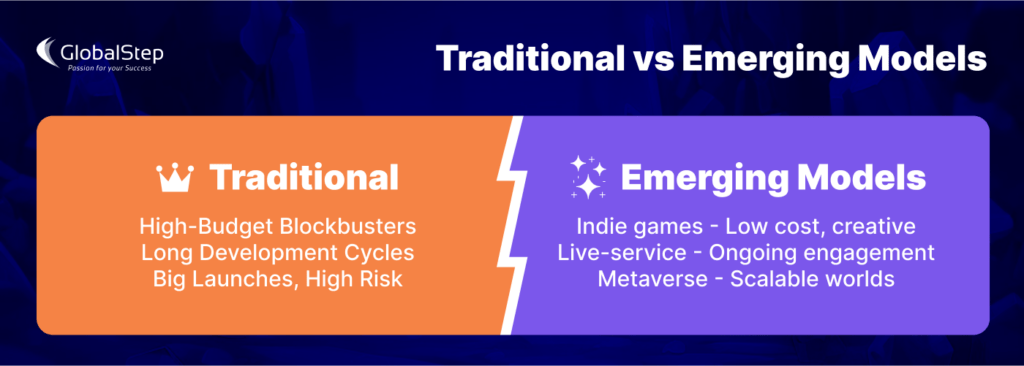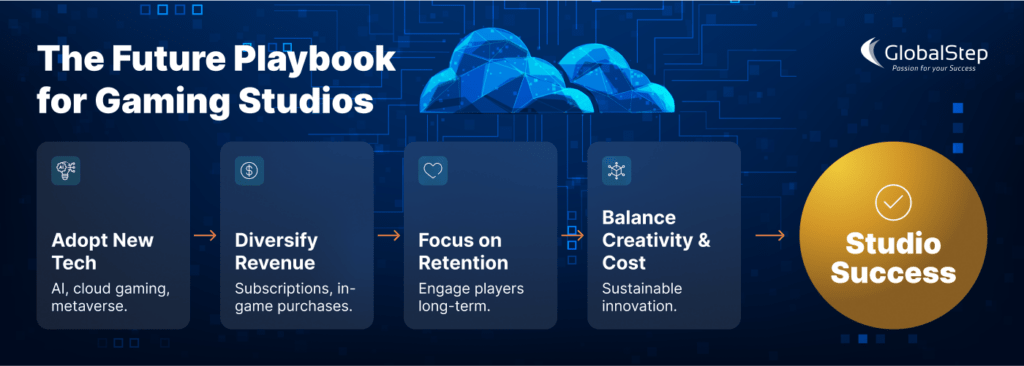
Over the past two decades, our industry witnessed unprecedented growth, soaring from an estimated $41.9 billion in 2007 (PwC, Ars Technica) to over $228 billion in 2023, with some estimates suggesting it reached as high as $396 billion in 2023 (Statista). This expansion was driven by digitization revolutionizing video game distribution, innovations in monetization such as subscriptions, free-to-play models, and live operations with downloadable content. Further catalysts included the smartphone revolution, exponential increases in processing power, and the meteoric rise of social media — collectively bringing billions of new game players into the fold and fostering unparalleled creativity and innovation.
Today, however, many of these powerful growth drivers appear to have plateaued. New potential catalysts, such as the Metaverse and Play-to-Earn (P2E) gaming, have yet to gain significant traction. Post-pandemic, the total number of players has actually declined — perhaps a reflection of life returning to normal routines and in-office jobs, or simply an adjustment after the surge in gaming engagement during lockdowns. A recent industry report, “The State of Video Gaming in 2025” by Matthew Ball, reveals just how profound this shift has been. In the U.S., the percentage of people who play video games has dropped from 78% to 72%. The total number of hours played per quarter among adult console gamers has fallen from 35 billion to 24 billion worldwide (excluding China and India). Mobile gaming, once the engine of industry expansion, has seen time spent in games decline, with engagement shifting toward other digital entertainment platforms.

Moreover, the influx of billions of new players in the past decade — players who eagerly experimented with new experiences — has stabilized. Today’s gaming audience has clearer preferences, making it harder for new titles to break through. The era of open exploration is evolving into an era defined by established franchises and sophisticated tastes.
Economic factors have also played a major role in reshaping the industry’s trajectory. Rising interest rates and broader financial uncertainty have made investment capital scarce, creating challenges for both new and established studios. According to Ball’s report, VC funding has continued to decline — down 87.5% from its peak in 2021 — and the number of investment deals has been cut in half. Developers today must do more with less, all while navigating an audience that is more sophisticated and discerning than ever before. Players expect deeper experiences, higher production values, and continued innovation, but delivering on those expectations has never been more expensive. Development costs have soared — from $50 million a decade ago to build a AAA title to as much as $500 million today — as studios push hardware to its limits while simultaneously meeting the evolving demands of their audience.
Yet, these headwinds are not signs of continued decline, but rather indicators of an inflection point — a transitional moment ripe for reinvention that has been a hallmark of our industry. The real challenge we now face as industry leaders is clear: How do we navigate these turbulent conditions while unlocking the creative potential necessary for the next wave of transformation?
“The video games industry is at an inflection point, where economic pressures, technological disruption, and shifting player behaviors are redefining the rules of success.”
Gagan Ahluwalia, Founder & CEO, GlobalStep
Already, we see promising paths emerging. New frontiers are emerging on the horizon — some well-defined, some still waiting to spark the imagination and curiosity of players. One area brimming with potential is mixed reality in all its forms. Virtual and augmented reality continue to advance, and as hardware and software capabilities improve, we are on the cusp of more immersive experiences than ever before.

Then there is the metaverse, a concept that has generated both excitement and skepticism in equal measure. While the initial hype may have outpaced reality, the long-term vision of persistent, interconnected virtual worlds remains a compelling idea. The question is not whether the metaverse will exist, but rather how and when it will evolve into something truly meaningful for players.
New game monetization models are also taking shape. While Play-to-Earn and blockchain-integrated economies are in their infancy, the underlying principles of digital ownership and decentralized economies hold promise. As cryptocurrency adoption grows and players become more accustomed to digital asset economies, we may see fresh monetization strategies redefine how players engage with and invest in their gaming experiences.

Perhaps the most transformative force of all will be artificial intelligence. AI has the potential to transform game development, making it faster, more cost-effective, and more innovative. From generating vast, dynamic worlds to personalizing player experiences, AI will empower developers to create content and potentially delight players in ways never before possible.
The gaming industry has always thrived on creativity, ingenuity, and collaboration. Current headwinds we face are not roadblocks; they are catalysts for reinvention. We stand not at a downturn, but at an inflection point – a moment of transformation.
The upcoming Future of Gaming panel at GDC is the first of many opportunities we’re fostering to bring together the best and brightest minds in the industry to exchange ideas, push boundaries, explore new technologies and chart our industry’s future course.
Because in the end, gaming has never been just about technology or business models — it’s fundamentally about imagination. And as long as we continue to dream big and collaborate deeply, I firmly believe our industry’s greatest innovations and most exciting chapters are yet to come.





